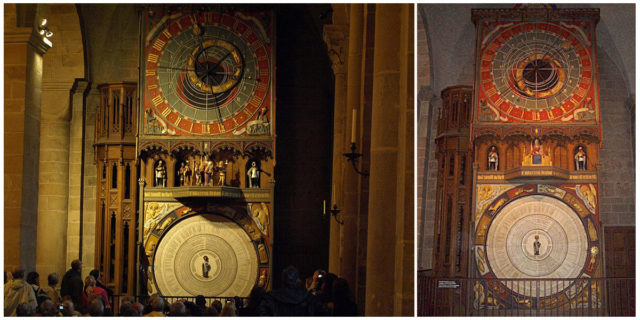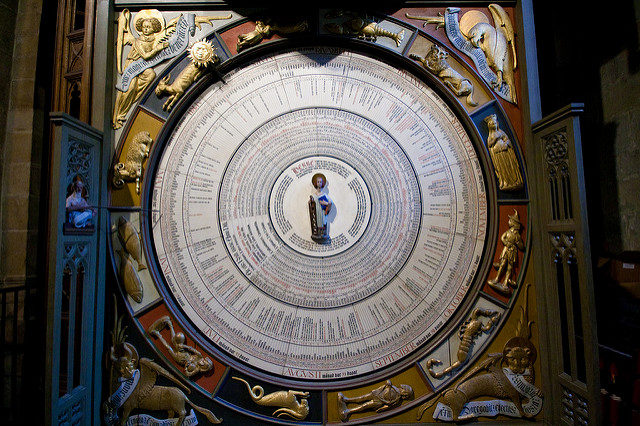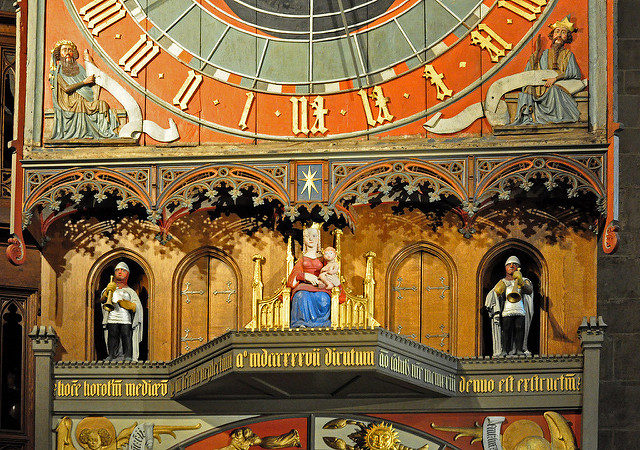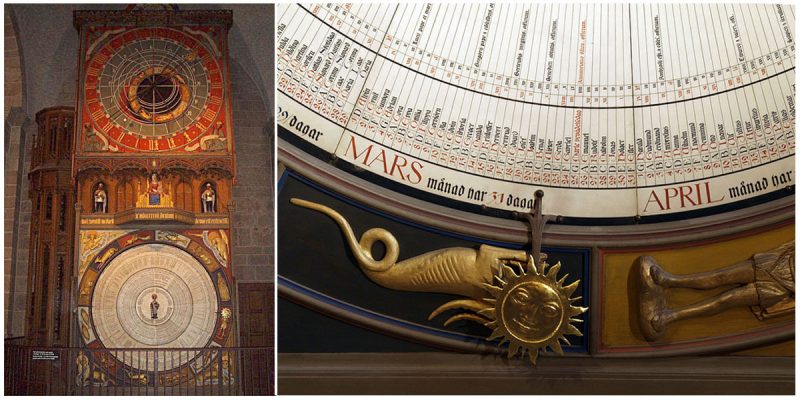The Lund Cathedral is the seat of the Bishop of Lund of the Church of Sweden. Inside, there is a fascinating clock: the Horologium mirabile lundese, or the astronomical clock of Lund.
The clock was constructed in 1380, but after the Middle Ages it gradually fell into disuse and by the nineteenth century had ended up in a storeroom.
In 1923, the architect Theodore Wahlin and the clockmaker Bertram Larsen found the clock and rebuilt it again.

The upper board is the astronomical clock, showing signs of the zodiac and the phases of the moon, and the lower is the calendar that could help to calculate when mobile religious holidays will fall, among others.

The clock plays a traditional Christmas carol (In Dulci Jubilo, dating from the Middle Ages) from the smallest organ in the church twice a day, at 12:00 p.m. and 3:00 p.m.
When this happens, seven wooden figures, the three wise man and their servants, pass by the figures of Jesus and Mary. At Sundays, the earliest playing takes place at 1:00 p.m. in order not to interrupt the morning service.

The top of the clock is the original one, where four figures are located. Each of the figures holds a paper scroll on which the passage of time has obliterated the original writing.
Three of them wear crowns of a typical medieval-type. The lower right-hand character has a crown of an oriental type which seems to denote a Muslim. Wahlin interpreted the two upper figures as representing great astronomers from Antiquity, such as Aristotle, Ptolemy, Hipparchus.
At the uppermost part of the clock, the knights of light and darkness can be seen fighting each other. Between them is the figure of Saint Lawrence, the cathedral’s patron saint.
The present board of the clock goes from 1923 to 2123, after which a new one will be needed so that the clock can still be used.
